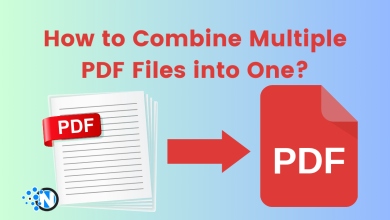Four Benefits of Using Amazon’s S3 Buckets

Storage. This single word can come to define an entire workload within the cloud framework. Storage is one of the most integral components of securing data, providing services, and running a business. With many workloads migrating to the cloud more often these days, it makes sense that having a strong storage solution that’s both simple and secure (not to mention easy to use) is more vital than ever before. Luckily, Amazon offers such storage solutions with its simple, yet elegant S3 buckets. In this article, we’ll take a look at S3 buckets and lay out four benefits of using them for your workloads at your organization.
S3 Defined
Amazon’s S3 buckets are simple object storage that are both scalable and multi-purpose. It can essentially store any type of object you desire. This includes (but is not limited to) applications, backup, recovery, disaster recovery, data archiving, data lakes, analytics, and even hybrid cloud storage. It uses a simple object storage architecture to allow users to store as much data as they need within the bucket. Standing for “simple storage solution,” S3 is an easy, reliable way to store, scale, analyze, and maneuver data within the cloud.
Cost-Effective
Using an S3 bucket is pretty cost effective. The typical bucket only costs around $0.021 to $0.026 per GB stored per month. Of course, this can largely depend on how much storage is being used, how much is needed, and where it’s being stored. There’s also a free tier that some customers can take advantage of under certain circumstances. For most businesses, however, a plan is going to be needed. But, due to the nature of S3 buckets, their multifaceted use scenarios, and relatively inexpensive costs of using the service, they become a very cost-effective way to store large amounts of data within the cloud.
Backups
Want to build a cloud native application? S3 can do that. Want to develop a data lake for some robust analysis with your data? S3 buckets are perfect for that too. But did you know that they are ideal for backups? That’s right; S3 buckets are perfect for creating and restoring backups. The data in an S3 bucket is stored in several different zones, in addition to storing different versions of the object. This is a failsafe/additional backup that can be used to restore a bucket in the event somebody misconfigures or otherwise messes with it. Buckets can also be replicated, but that can take up a little bit more storage space over time. Ultimately, S3 buckets are ideal for creating and restoring backups, making them one of the best cloud-based tools suited to this purpose.
Secure
Security within the cloud can be a bit of a challenge. There are a lot of factors at play when it comes to container security. Configuration, multiple security layers, logging, access, and encryption are all necessary for keeping cloud storage secure. Misconfiguration is, perhaps, one of the most common security issues relating to S3 Buckets or any cloud storage solution for that matter. Securing S3 buckets is simple and straightforward. They have fine grain permissions that require some level of tweaking to get the most out of them. Most of these features can be enabled or configured during the initial configuration stage, but it’s important to make sure that you go through and can ensure the configuration is correct. AWS actually provides tools for this process, making it easier to double check configuration and ensure there’s no misconfiguration. In this manner, the first step of keeping a secure bucket is accomplished. Other important security measures that are easy to leverage in an S3 bucket are multifactor/layer security, logging and identity management, as well as establishing role-based access for anyone who requires essential access to each bucket.
Encryption

As we mentioned before, encryption is vital to maintaining robust cloud security. Using encryption is an essential security measure for any cloud storage. Encryption is necessary for just about everything you do in the cloud. It’s just like having auto insurance for driving—you never want to leave home without it! Data can be exposed at any time, so encryption is useful for preventing issues. With S3 buckets, encryption should happen early on, during creation of the bucket, and you should make sure you switch it on. Then, buckets can be encrypted across different accounts, on the server side, and on the transfer side (using HTTPS protocols). It’s also easy to set up a standard encryption for new objects in the bucket. The benefits of encryption are numerous and significant, so using it to its full advantage is essential to get the most out of your S3 buckets.




